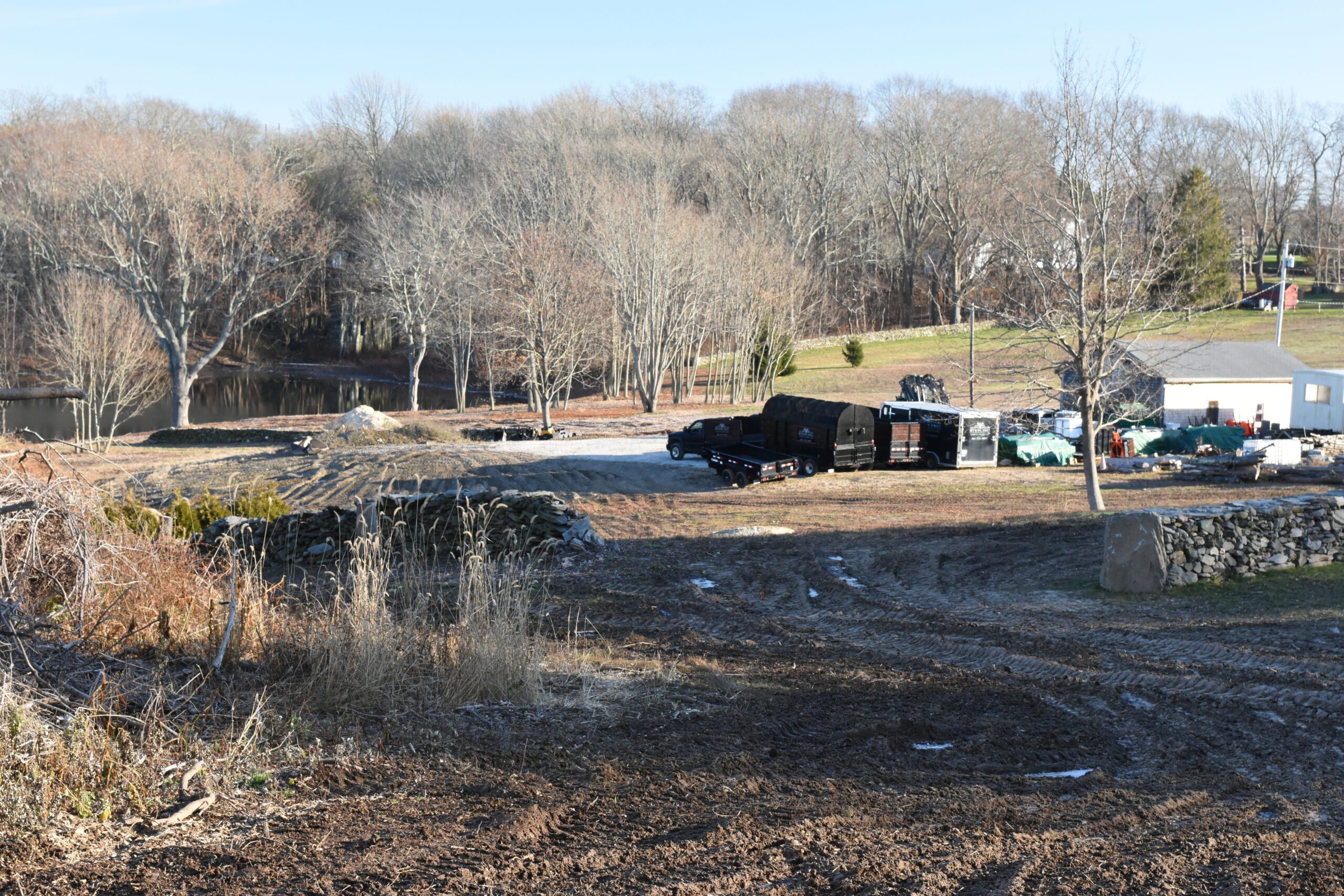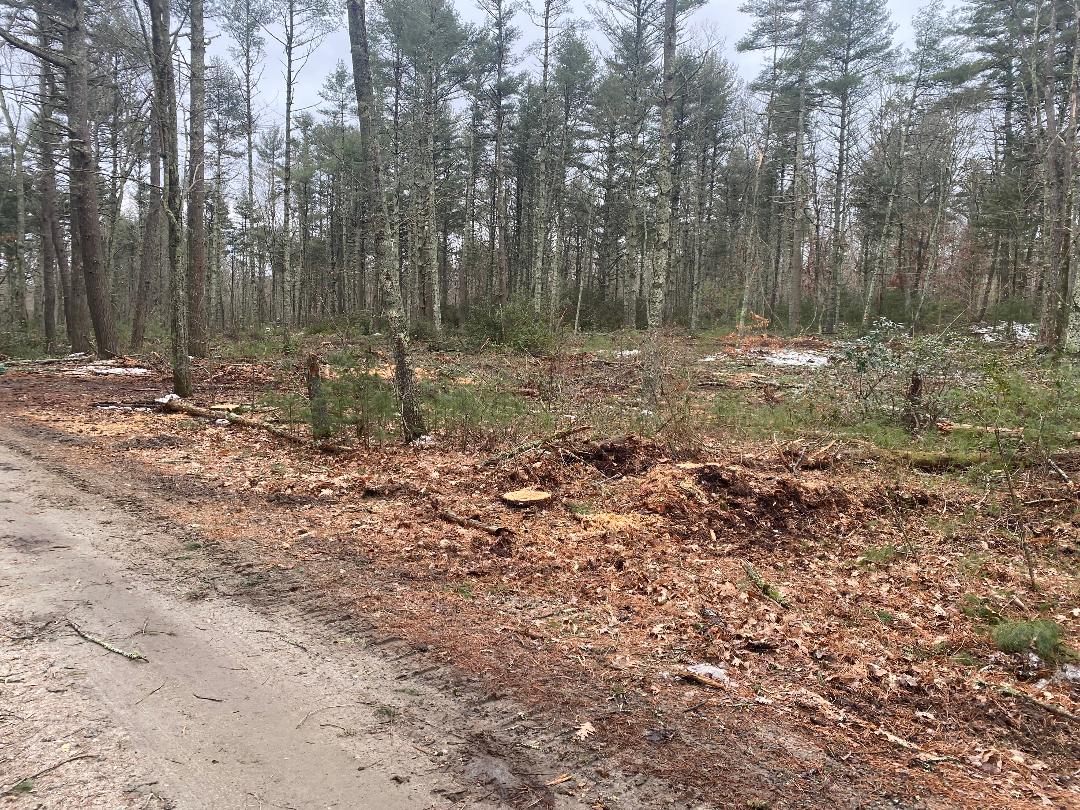Battles Over Water Rights, Land Use Likely to Become More Common
October 19, 2022
HOPKINTON, R.I. — A proposed amendment that would have allowed residentially zoned properties to host commercial water wells failed at a recent Town Council meeting.
All five members of the council voted this week against the zoning change, sought by Thomas Byrnes, the owner of land on Ashaway Road who has been seeking to sell water from the well on his property.
Byrnes was requesting that the town change its land-use table to allow a “commercial water distribution center,” which would help clear the way for a commercial well on his property.
The issue highlighted the clash between individual property owners’ rights and the fact that water in Rhode Island is becoming a scarce resource.
“This is the kind of business, literally, and I don’t mean any pun with this, that would drain us dry,” Town Council member Michael Geary said. “Water is one of those things that slowly, for anybody watching, is slowly becoming a crisis.”
Council President Stephen Moffitt emphasized that the council’s vote was not against a specific project, but the addition of a whole land-use category.
“I just don’t see this can of worms is beneficial to us,” he said.
Leah Boisclair, an attorney representing Byrnes, said he may decide to continue the fight, which has led to contentious public meetings, one gas station confrontation, and a cease-and-desist letter from the town.
A well 900 feet deep and 13 years in the making
In 2009, Byrnes hired Northeast Water Solutions to install an exploratory well and do a pump test in the hopes the town would use it as a public water source, but it was never approved.
Prior to September 2020, when the town stopped Byrnes from selling water, he allowed Benn Water & Heavy Transport to haul water out of the well on Ashaway Road to fill pools, temporary water tanks, and other uses.
David Benn, one of the owners of the Ashaway-based company, said it was easier to haul water from the Byrnes property for customers nearby, as the next closest well is about 24 miles away, which is a costly trip for a heavy diesel truck.
The Ashaway Road well had already become a topic of town discussion, and Benn said he started to hear “wild claims” through the rumor mill: His trucks were hauling 50 loads of water a day — something he said is not needed for his clients’ demands — or someone from the company was camping out in the woods by the well 24 hours a day to monitor it.
Once when he was at a gas station in town, Benn said he was approached by a man asking him about the issue and berating him for taking water from Byrnes’ well.
Benn, who said “My family lives right up the road, like we’ve been in this town for five generations, if not more,” tried to explain the same thing to the man, offering his phone number for further discussion. “We definitely do not want to be causing a hardship for anybody,” he said he told the man, whose name he did not know.
Benn said he didn’t know the property wasn’t zoned for commercial use while he was hauling water from the site. Byrnes had showed him the approved well permit from the Rhode Island Department of Environmental Management (DEM), Benn said, and he felt comfortable going off that documentation, he added.
Benn said he wasn’t sure when his company first began hauling water from the Ashaway Road property, but when he found out about the zoning issue, he immediately stopped.
A cease-and-desist letter sent to Byrnes from the town dated Sept. 30, 2020, cites a different zoning letter from 2013 that says the property is to be used for agricultural purposes only and that commercial water hauling was not allowed.
Benn said he hasn’t hauled water from the well since.
Not ‘at the expense of us’
Since the request for the zoning ordinance amendment was submitted, there have been some heated meetings about the proposed change.
The criticism has largely stemmed from concerns that the deep well, which is 900 feet and goes straight to bedrock, could impact other wells in the area.
“I believe this commercial water distribution center is not in the best interest of our town,” said Joe Moreau, a Hopkinton resident, at the council’s Oct. 17 meeting. “[Benn and Byrnes are] in business to make money, but not at the expense of us. And that’s what’s happening.”
Some residents said they thought Benn hauled water out of the well this summer, after the town had already told Byrnes to stop. Benn said trucks there in July had been taking or adding water to holding tanks that Byrnes had installed on the property, not drawing water from the well.
Timothy Gould, another Hopkinton resident, submitted a petition against the well and the zoning change with 80 signatures from neighbors at a town meeting earlier this month.
Thomas Boving, a professor of civil and environmental engineering and geosciences at the University of Rhode Island, told ecoRI News that residents do have a right to be concerned because a well used for commercial purposes could end up impacting surrounding water sources.
Boving likened the situation to the way a bathtub operates: if the water coming in through the “faucet” (rainwater or river water) is the same amount as the water flowing out of the “drain” (from household use, or irrigation, or other uses), the level of water in the tub doesn’t change. But if more water is drained than flows in, the level in the “tub” will drop.
The only way to know if enough water is coming into the system to allow water to be drawn for hauling would be to do an extensive pump report, Boving said. But reports can vary in their process and rigor, he explained, and one done in 2009 cannot account for changes or increases in demand on the aquifer that occurred since.
Robert Ferrari, president of Northeast Water Solutions, said the report completed in March 2009 showed the well could produce a steady supply of water.
The 2009 report noted that more than 29 gallons of water per minute could be drawn without “severe drawdown of the well.” It took about 2½ days to replenish the water resource to pre-pump levels after water was drawn continuously from the well for 10 days as a part of the pump test, according to the report.
Ferrari said no one will know if high levels of withdrawal will impact other wells until an updated report is completed. Since 2009, the topography of the area could have changed; for instance, he said, more paving for example might impact the area’s ability to reabsorb water.
Ferrari also said that in 2010, the state added strict pump test requirements for wells that can draw 10,000 gallows of water a day or more to show the well’s impact on the surrounding environment. Because Byrnes’ well was approved by DEM in 2009, to be approved under the 2010 law, another test that meets the new requirements would have to be completed. To become a public well, it would also need to be tested for certain bacteria and approved by the state Department of Health, Ferrari said.
“If getting a new well report and a new test is something that the Town Council would feel comfortable with, we’re more than happy to do it,” Boisclair said. “We have no objection to that.”
The original cease-and-desist letter from the town invited Byrnes to appeal the decision, an option that could still be available. Boisclair said Byrnes could also find out how much of the land is undevelopable, which is likely a large portion because of wetlands on the property, and then get a use variance that shows the water and well are the only viable use for the property.
Boisclair said Byrnes hasn’t made a decision on his next steps.
Boving noted more cases like this may pop up as the strain on water supplies grows.
“Water is the new oil … the new ‘black gold,’” he said. “These are the issues that, so far, we didn’t have to deal with because water was just there in Rhode Island and New England. But the situation is changing.”
Colleen Cronin is a Report for America corps member who writes about environmental issues in rural Rhode Island for ecoRI News.




Individual communities need to pay particular attention to land use with an emphasis on available well water and the polluting effects of on-site wastewater systems. There are many areas where the only water source is from individual wells. South Tiverton and Little Compton are cases in point. Communities have needed to change zoning to increase minimum lot sizes because of this. It is not unusual to have a well 400 feet deep, or to have to deepen an existing well due to increased development and usage. Why would you want to allow a commercial enterprise to be able to extract and sell this precious commodity at the expense of individual well users solely for profit? Would you expect neighboring wells that run dry to be deepened at the owners’ expense, or to have to buy their water from this new entrepreneur? This past summer should serve as a wakeup call as many wells were drastically reduced in capacity or ran dry.